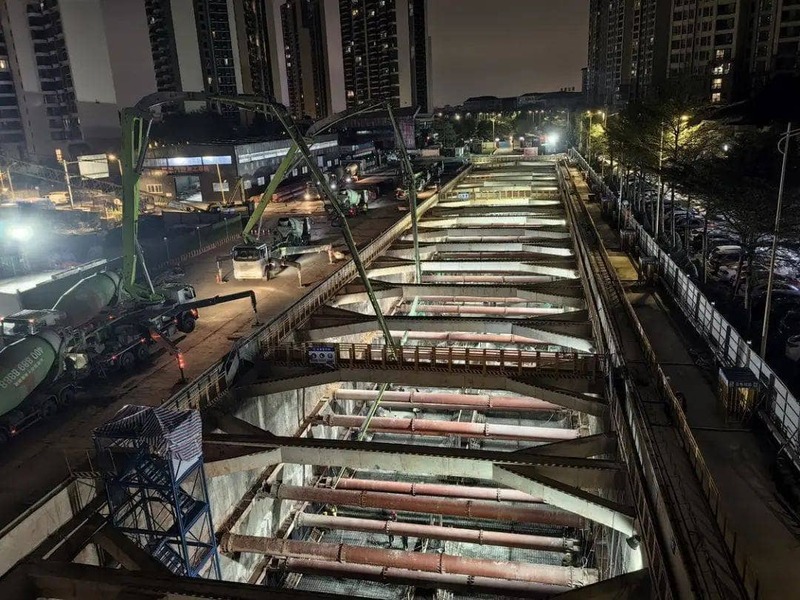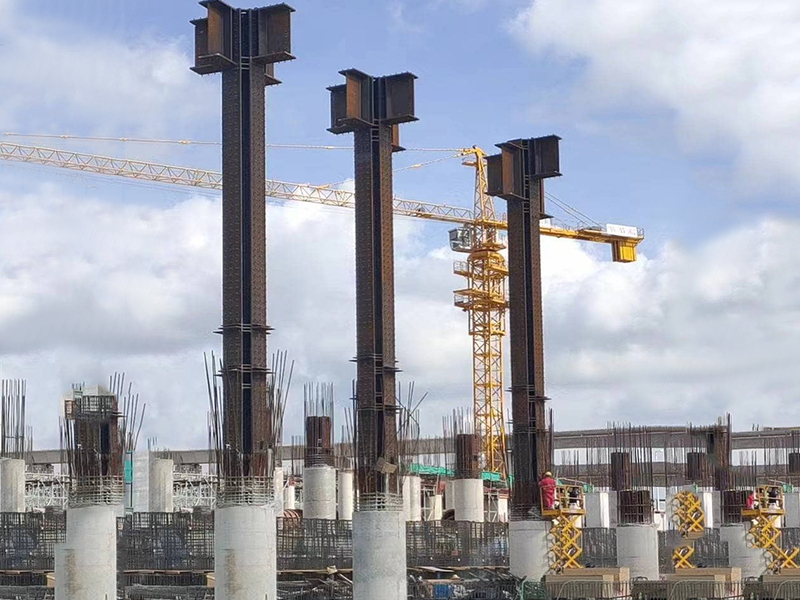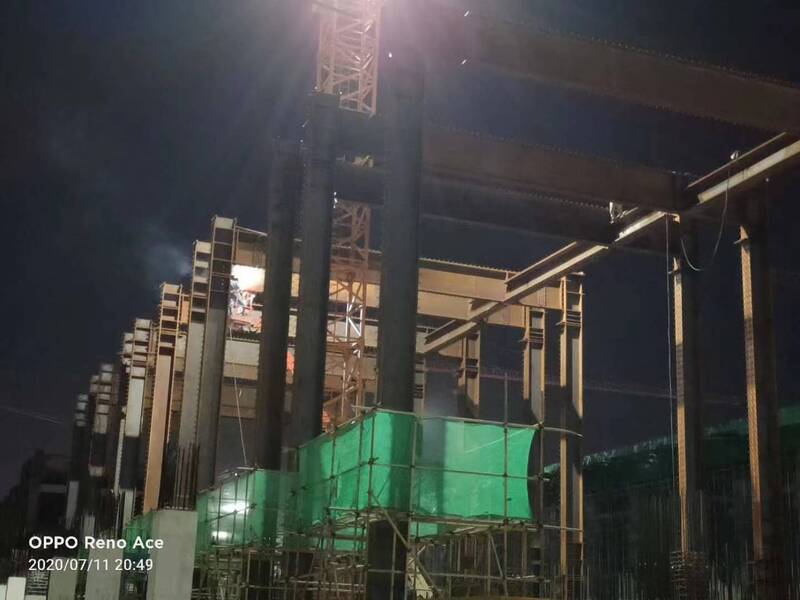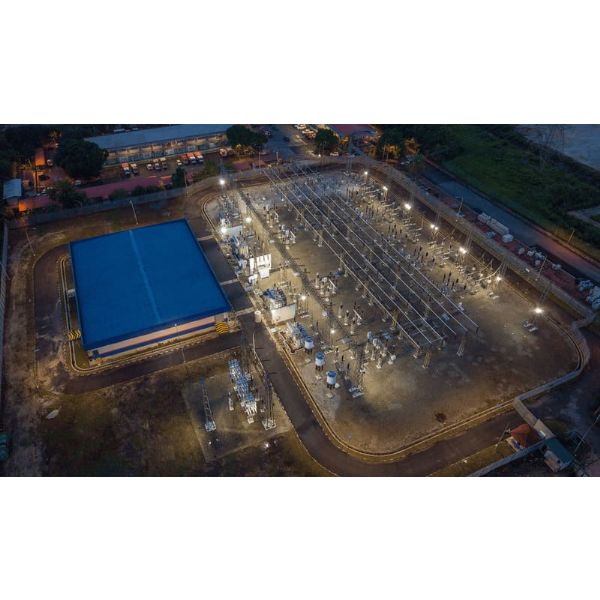The railway structure project in Foshan City represents a milestone in China’s rapidly advancing infrastructure development. As cities across the country expand and modernize, the demand for reliable, efficient, and sustainable transportation systems continues to grow. Foshan’s railway structure project stands as a model of how strategic planning, advanced engineering, and environmental responsibility can combine to deliver an infrastructure solution that strengthens connectivity and supports long-term urban growth.
Located in one of the most economically vibrant regions of Guangdong Province, the Foshan railway project serves not only as a vital transport link but also as a cornerstone of regional infrastructure innovation. This project embodies the future of smart city construction — where precision, scalability, and sustainability define the next generation of transportation systems.
Project Overview: Scope and Scale
At the heart of this project lies an extraordinary vision of connectivity and technical excellence. The Foshan railway structure extends over 32.41 kilometers, making it one of the city’s most significant infrastructure undertakings. This scale demonstrates not merely the vastness of the project but the strategic importance of creating an integrated transport corridor that links people, goods, and industries.
Connectivity and Urban Integration
The railway’s design prioritizes seamless urban integration. By linking key industrial zones, residential districts, and transportation hubs, the project enhances accessibility across the region. For residents, it means shorter travel times and improved mobility. For industries, it enables efficient logistics and greater economic synergy between neighboring cities. This integrated approach positions the railway as a backbone of regional infrastructure connectivity.
Economic and Strategic Significance
In a city like Foshan — known for its manufacturing prowess and continuous urban expansion — the railway structure plays a pivotal role in driving economic growth. By improving transport efficiency, the project reduces operational costs, supports freight movement, and enhances competitiveness. It reflects the Chinese government’s commitment to building world-class infrastructure that fosters sustainable regional development.
Structural Design and Engineering Excellence
The Foshan railway project stands out for its engineering sophistication and structural durability. Built using 4,700 tons of high-quality steel, the railway structure exemplifies the fusion of strength and flexibility that modern infrastructure demands. Steel was selected for its superior load-bearing capacity, seismic resistance, and long-term performance.
The Power of Steel in Infrastructure
Steel remains a cornerstone of durable infrastructure. Its adaptability allows engineers to create strong yet flexible frameworks capable of withstanding the stresses of heavy railway operations. In Foshan, this choice ensures that the railway can endure both daily wear and extreme conditions, maintaining safety and stability throughout its service life.
Advanced Construction Methodologies
The use of a specialized Steel Structure Industrial Work Platform played a critical role in achieving construction efficiency and precision. This cutting-edge technology allowed engineers to manage massive steel components safely and accurately. The result is a structure that not only meets but exceeds national safety standards, setting a new benchmark for large-scale infrastructure construction in China.
Precision and Quality Assurance
Every phase of the project adhered to strict quality control standards. Prefabricated components were manufactured with millimeter-level accuracy, reducing on-site adjustments and minimizing construction waste. The emphasis on precision ensured faster assembly, lower costs, and enhanced reliability — all key features of next-generation infrastructure design.
Sustainability and Environmental Stewardship
Modern infrastructure projects must balance performance with environmental responsibility, and the Foshan railway project exemplifies this balance perfectly. Engineers adopted sustainable design principles aimed at minimizing the ecological footprint while maximizing long-term value.
Eco-Friendly Construction Practices
Throughout construction, waste reduction and energy conservation were prioritized. Steel’s recyclability made it an environmentally sound choice, while prefabrication methods minimized material loss by over 80%. These measures significantly reduced the project’s carbon footprint, aligning it with global green infrastructure standards.
Energy Efficiency and Urban Sustainability
The project also integrates energy-efficient systems that optimize power usage during operation. Natural lighting, low-energy materials, and advanced ventilation contribute to the overall environmental performance. Beyond transportation, the railway structure supports Foshan’s goal of building a resilient and sustainable urban ecosystem.
Social and Environmental Impact
By minimizing land disruption and promoting efficient mobility, the project not only benefits the economy but also improves quality of life for local residents. Reduced traffic congestion, lower emissions, and better accessibility all contribute to a cleaner, greener, and more connected city — hallmarks of sustainable infrastructure planning.
Timeline and Project Execution
Completed in 2021, the Foshan railway project stands as a testament to timely delivery and project management excellence. Despite its scale and complexity, the project adhered to tight deadlines without compromising safety or quality — a reflection of China’s growing mastery in infrastructure execution.
Construction Milestones
From groundbreaking to final testing, every phase of construction was executed with precision and foresight. The modular steel components were fabricated off-site and assembled on-site, accelerating progress while ensuring consistent standards. This efficiency reduced labor costs and minimized environmental disruption, showcasing the transformative power of industrialized construction in modern infrastructure.
Collaborative Engineering and Innovation
The success of the project was made possible through close collaboration between architects, engineers, and material specialists. Together, they combined traditional construction wisdom with new technologies to deliver a railway structure that embodies innovation and reliability.
Architectural Design and Aesthetic Integration
Infrastructure today is not just about utility — it’s also about aesthetics and urban harmony. The Foshan railway structure demonstrates how functionality can coexist with modern architectural beauty. Clean lines, sleek contours, and minimalist design principles give the structure a visually appealing presence that complements the cityscape.
Balancing Functionality and Form
By blending design and engineering, the project avoids the purely industrial look typical of large infrastructure works. Instead, it presents a symbol of modernity and progress — a structure that reflects Foshan’s forward-thinking vision while serving practical transportation needs.
Urban Identity and Cultural Impact
Beyond its functional role, the railway has become part of Foshan’s evolving urban identity. It symbolizes efficiency, mobility, and modernization — qualities that define 21st-century infrastructure. Its architectural coherence with the surrounding environment enhances the city’s visual landscape and fosters civic pride.
Resilience, Safety, and Long-Term Performance
The Foshan railway structure is engineered for resilience. Designed to handle high operational demands, heavy traffic loads, and varying weather conditions, it exemplifies the durability required of critical public infrastructure.
Safety Engineering
Multiple layers of safety systems ensure optimal performance under extreme circumstances. From seismic resistance to fireproof coatings, every aspect of the design prioritizes protection for passengers, operators, and maintenance teams.
Longevity and Maintenance Efficiency
The steel framework and precision construction significantly reduce long-term maintenance costs. The modular design allows for easier inspection and repair, ensuring operational continuity for decades. This foresight is what differentiates world-class infrastructure development from conventional projects.
Strategic Importance in Regional Infrastructure Networks
The Foshan railway structure is not an isolated achievement; it is an integral part of China’s vast network of urban and intercity railways. It enhances mobility across Guangdong Province and connects Foshan to the Greater Bay Area, strengthening economic and logistical integration.
Boosting Regional Connectivity
By linking Foshan with key economic centers, the project facilitates smoother trade routes and more efficient transportation of goods. This connectivity supports China’s long-term infrastructure vision — one that emphasizes interconnected, resilient, and sustainable development across all major cities.
Empowering Economic Growth
Enhanced infrastructure creates ripple effects across the economy. The Foshan railway project has already spurred new investments, improved industrial efficiency, and created employment opportunities. It reinforces how high-quality infrastructure can act as a catalyst for economic transformation.
Conclusion: A Benchmark for Future Infrastructure Projects
The railway structure project in Foshan City is far more than a transportation corridor — it is a symbol of modern infrastructure innovation. By combining advanced engineering, sustainable practices, and architectural vision, the project sets a benchmark for what future infrastructure should aspire to achieve.
Its success reflects the synergy of precision engineering, environmental consciousness, and strategic foresight. As cities around the world face growing mobility and sustainability challenges, the Foshan railway project stands as an inspiration — proving that infrastructure, when designed with intelligence and integrity, can shape a smarter, greener, and more connected future for generations to come.







